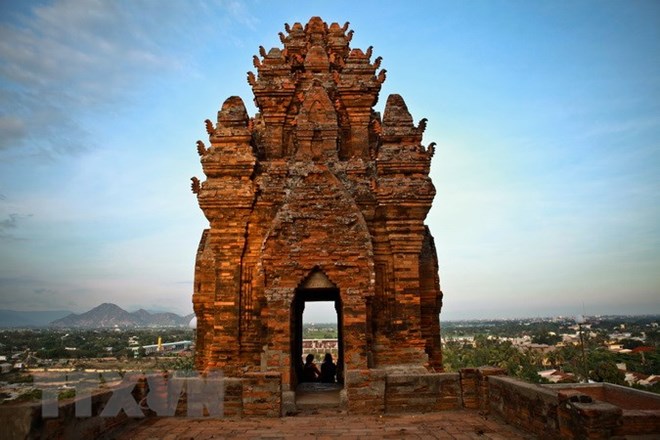The south central coastal province of Ninh Thuan is calling for investment in infrastructure and restoration and upgrade of cultural historic relic sites in a move to sustainably develop cultural tourism.

Po Klong Garai tower in Ninh Thuan province (Photo: VNA)
The province’s tourism sector is working to improve quality of tours connecting Phan Rang-Thap Cham and districts to promote local tourist products, and build up its outstanding tourism brand.
According to the provincial Department of Culture, Sports and Tourism, the province has 149 cultural heritages, including two special national relic sites, and 12 national relic sites. Particularly, the local Don Ca Tai Tu (southern folk music) was recognised as Intangible Cultural Heritage of Humankind by the United Nations Educational, Scientific, and Cultural Organisation (UNESCO).
Cham pagodas with unique architecture have been an icon of Ninh Thuan province for centuries. Especially, it must be a fascinating experience when visiting well-preserved Cham tower complex, including Po Klong Garai and Hoa Lai towers which were recognised as special national architectural relic sites.
In addition, the province has been renowned for a line-up of festivals such as the Whale Worshipping, leaving tomb, and cremation ritual of the ethnic Cham Brahman people.
The most important event of the Cham ethnic must be the Kate festival, with major activities taking place in temples, towers, and central areas in villages and towns. Falling in the seventh month of the Cham calendar, the festival reminds the ethnic Brahman community of their ancient gods and delivers wishes for bumper harvests and the growth of all beings. During the festival, people wear traditional clothes to join rituals and cultural activities, folk dances, musical performances with traditional instruments.
Besides organising traditional festivals, the province has developed tours of craft villages, with two famous villages of Bau Truc and My Nghiep.
Bay Truc pottery village, a national intangible heritage, is the oldest pottery village in Southeast Asia. Some 85 percent of the village’s 400 households make pottery. Every stage of the pottery-making process is done by hand.
Meanwhile, tourists should not miss My Nghiep village in their tour to local craft villages. The village is popular for its traditional craft of weaving brocade. Visitors can see locals weaving and making various products from brocade such as handbags, wallets, and backpacks.-VNA